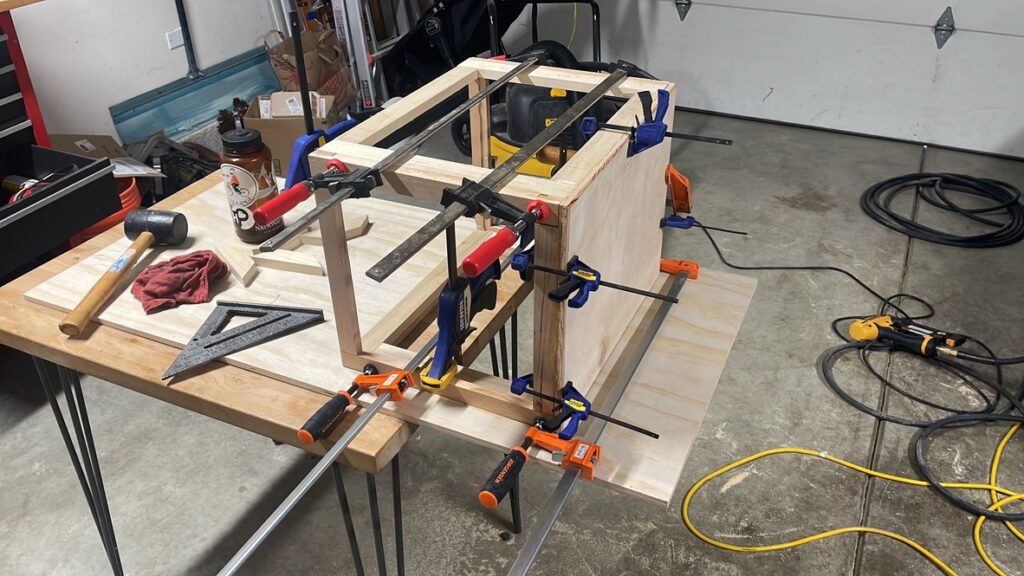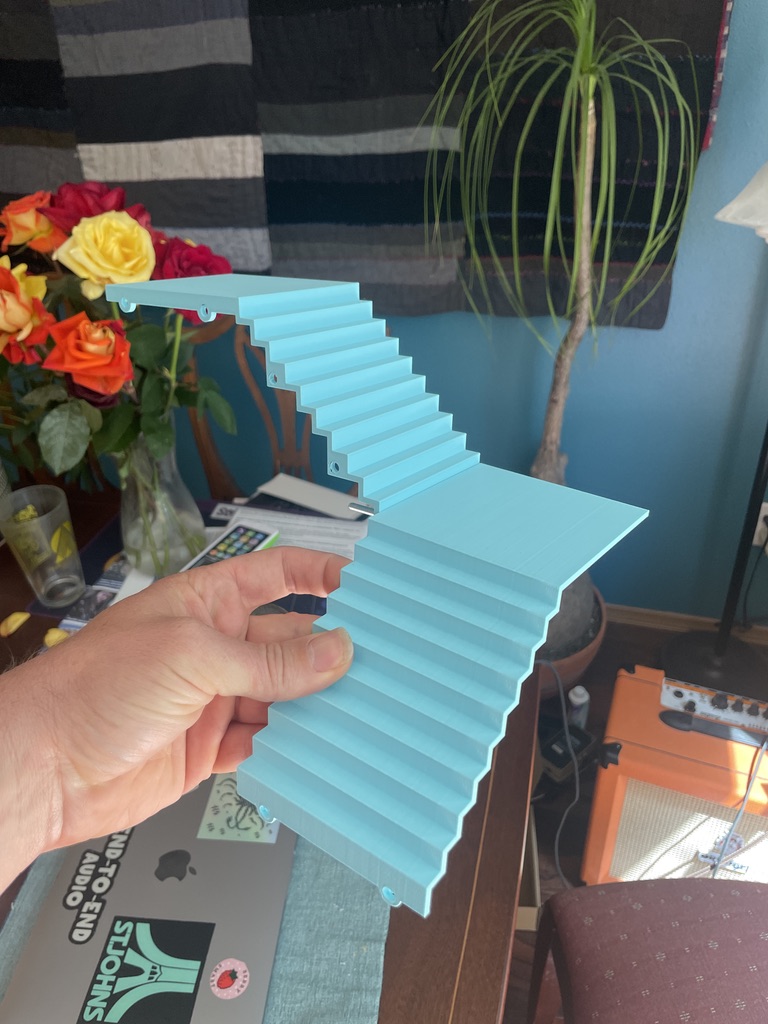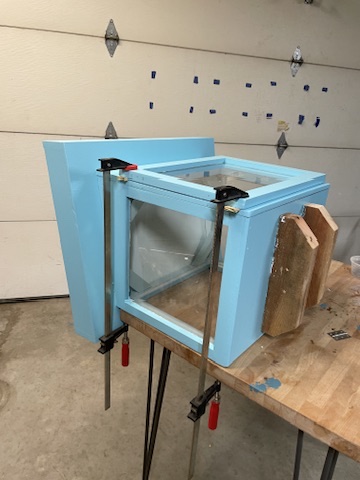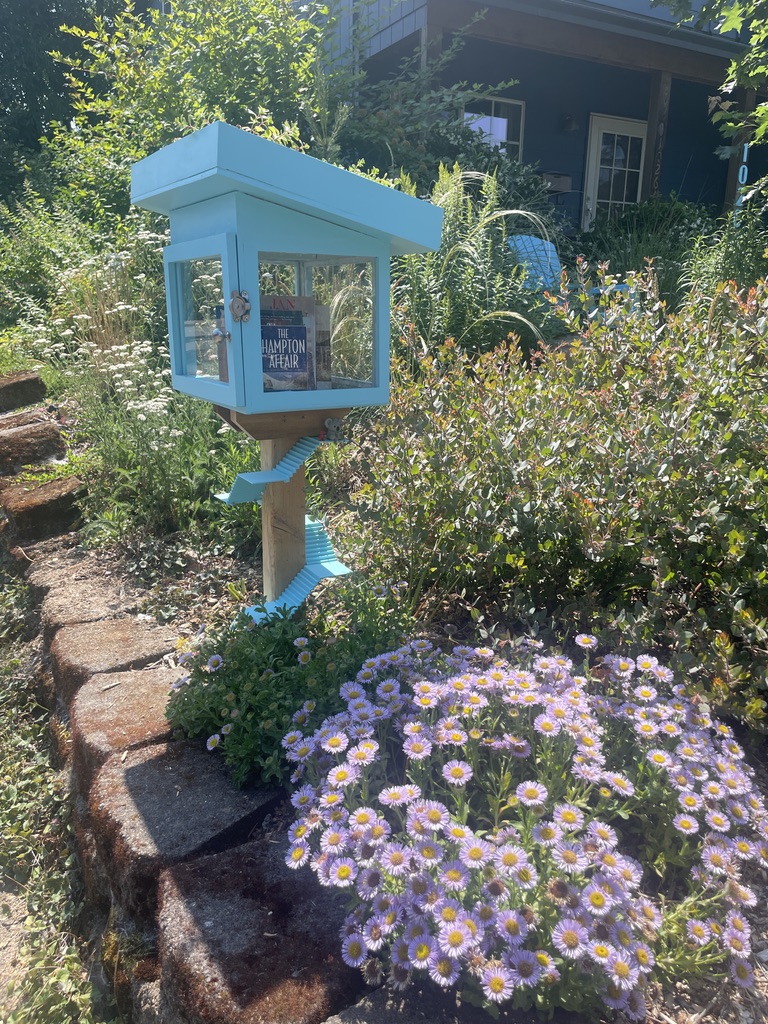I’d built an indoor bird-feeder for my partner a couple years ago, and while it was a lot of fun and a little startling to have birds come into your room to feed, ultimately we didn’t use it that much. I’ve been wanting to make a little library for some time, and so finally refactored the bird-feeder into as much.
It’s really nice having windows on all sides: it’s easy to see what is in the library and I don’t think spiders will want to set up shop as much as they do in the darker ones. And kids love the 3d printed staircase (file here), mixing a fairy garden with some knowledge. The stairs are modular and 90mm high and across, meaning they wrap a 4×4 post well.






